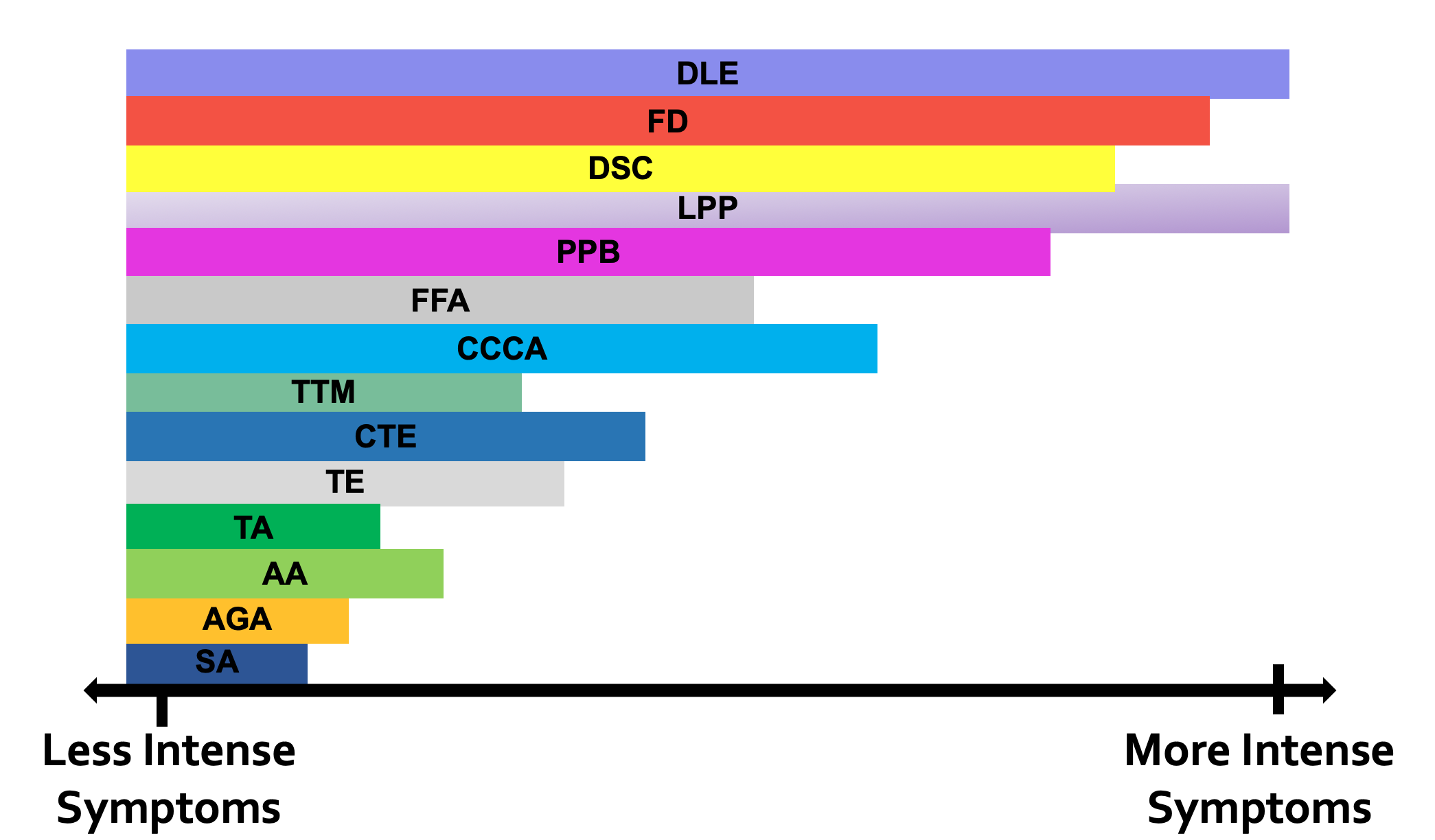Which Hair Loss Conditions have the Greatest Symptoms?
Scarring Alopecias often have more Symptoms than Non Scarring Alopecias
It is important for the clinician to obtain information about scalp symptoms from patients with hair loss. There is no interview that should conclude without asking patients about whether or not they have itching, burning or tenderness in the scalp. If present, the clinician should ask about the intensity of these symptoms. Personally, I like to rate symptoms on scale from 0 to 10, (with 0 being the absence of a symptom and 10 being the most).
When it comes to symptoms, there are no rules, only generalizations. The group of non scarring alopecias tend to be less symptomatic “on average” than scarring alopecias. Of course, these are just averages and there are many examples that break the rules. Within the family of scarring alopecias some conditions like frontal fibrosing alopecia (FFA) are often fairly asymptomatic. There are however many patients with FFA who do have considerable scalp symptoms so again these are only generalizations.
Of the classic scarring alopecias, FFA and CCCA tend to have fewer symptoms overall than classic lichen planopilaris (LPP), pseudopelade (PPB), dissecting cellulitis (DSC), folliculitis decalvans (FD) or discoid lupus. The figure shows the tremendous variation in symptom intensity that is possible. Some patients with LPP, DSC, FD, DLE have symptoms that keep them up at night and make life difficult- others with these conditions have no symptoms (even when the disease is active).
There is a tremendous variation in scalp symptoms that patients with hair loss experience. In general scarring alopecias tend to be more '“symptomatic” than the non scarring alopecias.
The non-scarring alopecia group is often alot quieter. Most patients with sensecent alopecia and androgenetic alopecia have few symptoms- although it does seem likely that AGA itself could occasionally give a few symptoms. Telogen effluvium (TE) and chronic telogen effluvium (CTE) are often asymptomatic although some have itching, burning, tingling and creepy-crawly feelings and “trichodynia.” Alopecia areata (AA) is classically asymptomatic but some due have symptoms before a patch forms. Patients with trichotillomania reports a wide range of symptoms.
The chart shows that all patients with very intense symptoms should have a thorough clinical and trichoscopic examination (and possibly scalp biopsy) to rule out scarring alopecia.
This article was written by Dr. Jeff Donovan, a Canadian and US board certified dermatologist specializing exclusively in hair loss.

